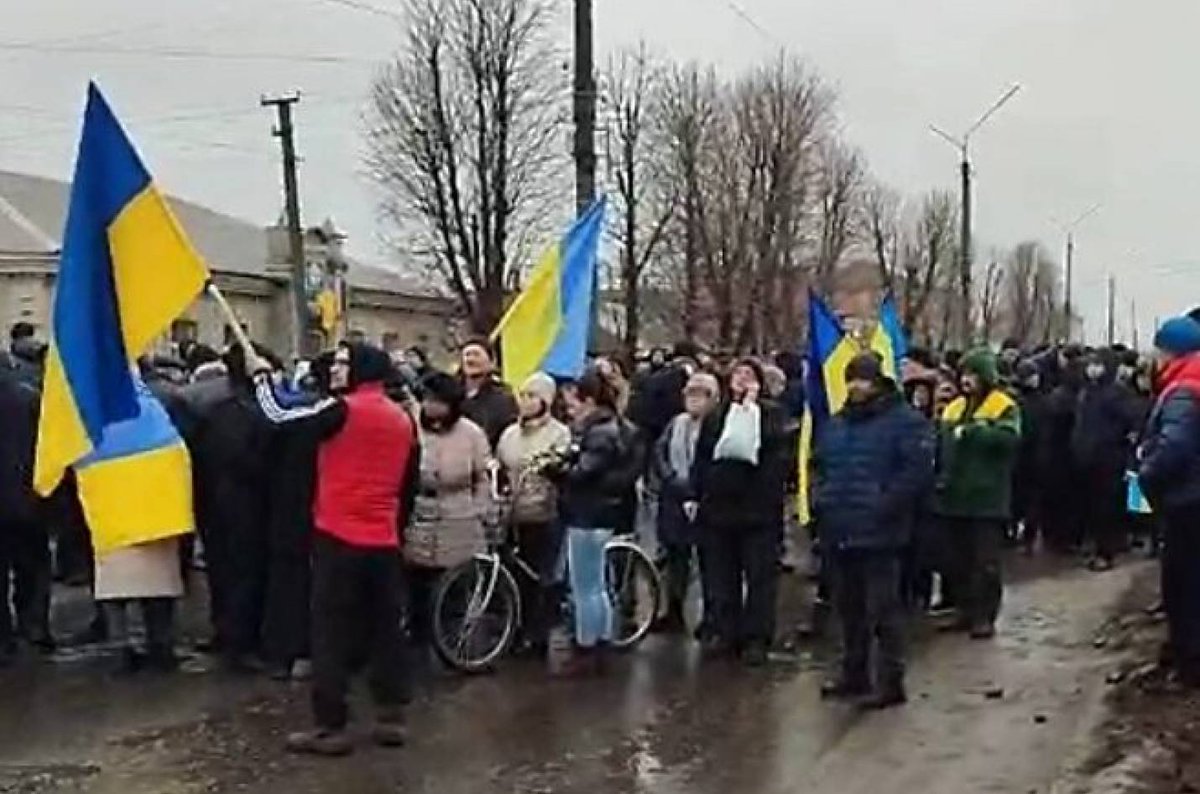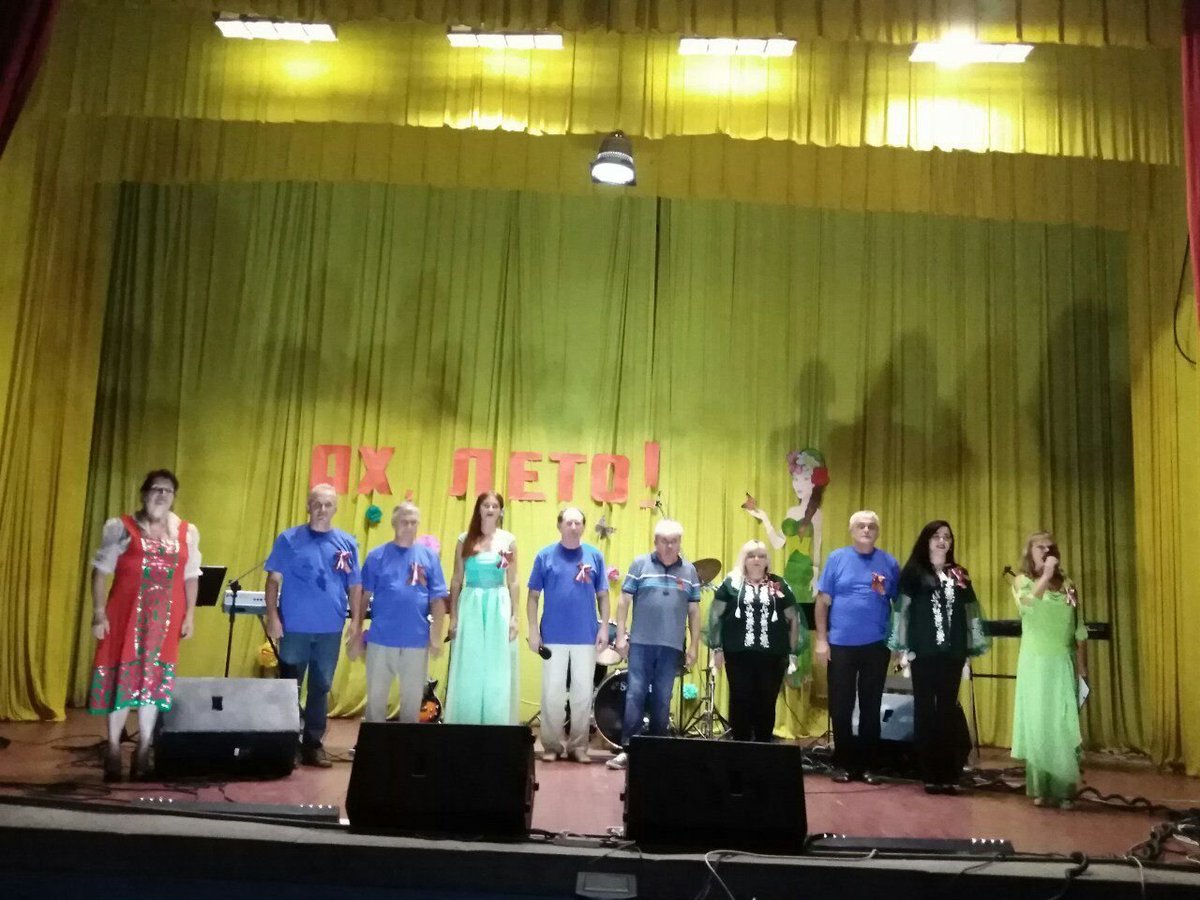
My latest for @opendemocracyru on the (comparatively!) "soft" occupation of northern #Luhansk #Donbas east #Ukraine. Russia has various occupation formulas and understanding how they are trying to rule here is important. #RussiaUkraineWar THREAD opendemocracy.net/en/russia-ukra…
Russia claims it has "liberated" the "Ukraine-occupied territories of the Luhansk Peoples Republic." In practices this means obliterating all the cities under government control, depopulating them, but capturing the rural north with minimal force. This is region I describe. 2/
Rural north is part of "Sloboda Ukraine," historically centered around Kharkiv. Soviet planners combined it with half of #Donbas to make Luhansk Oblast. It sent food and workers to the south, but has very different historical roots. At same time, 70 years together left mark...3/
...politically, as we see in domination of most Russia-friendly candidate in 2019 prez election. Common political trends between rural, Ukrainian/Surzhyk (UA-RU mix) speaking north and urban Donbas. But I delve into nuance in this article. 4/ 

Russia made a weak play to bring rural north into "Luhansk Peoples Republic" in 2014. Found plenty of willing local administrators to run "referendum." Certainly part of local population was willing. 5/
I recall internally displaced person in northern Novopskov in 2015 telling me (in Russian) "I fled Luhansk to get away from the Russian tanks, only to find out half the people here are waiting for them!" 6/
But I also met family farmers who founded Starobilsk Self-Defense that became the Aidar Batallion, which did some very heavy fighting against Russia and separatists. In end Moscow wanted the Donbas more than Sloboda region and Ukraine held the north with minimal fighting. 7/
So what about 2022? Honestly, looking at the election results I posted above I was always nervous what would happen if Russia came back to seize the north. Resistance? Acceptance? All these seemed possible from diverse locals. And basically we got both. 8/
But very, very importantly, the pro-Ukrainian element grabbed the initiative and set the tone with anti-occupation protests in late February, joining Ukrainian wave of civic resistance. It was frankly exhilarating to watch from a distance (I left Ukraine morning of invasion). 9/ 



This occurred in almost all county seats of the north. I argue pro-UA feeling drew both on ethnic and national identification and on economic optimism in largest rural communities brought about by good Ukrainian state policy, especially decentralization. 10/
Decentralization has mixed record. Other commentators like @Bogdan_Voron can say more, but where it worked it spruced up scruffy towns, improved government services + citizen engagement. Ukraine deserves credit for good policy! Unsurprisingly RU despises decentralized towns...11/
...refuses to recognize them under occupation and replaced elected heads with overseers from among local pro-Russians. Occupiers furious that budget reforms also reduced amount of cash stashed in safes of local administrations. "The Americans screwed the whole system up!" 12/
In this piece I profile a wonderful poster child of decentralization, the unstoppable Natalya Petrenko of Shulhynka village who never bowed to Russian occupiers. Here she is shouting at them when they knocked over the Ukrainian flag near her office. 13/ 

Anyway, I also argue that good UA policy fostered optimism and pro-unity feeling even in ethnically diverse, mostly Russophone cities like #Sievierodonetsk #Rubizhne #Popasna that are now destroyed. There are various routes to Ukrainian patriotism
And sadly, lack of economic optimism in fading and depressed smaller villages of the region made them more open to Russian occupation, even when they have more defined Ukrainian ethnic composition. OF COURSE pride in UA nationality plays a big role on personal level...15/
...and there are many patriots from depressed villages, but Soviet nostalgia, withered communal life, collapsing smallholder farming and demographic outflow means villages have high proportion of older folk who have not necessarily found self realization in independent UA.16/
So the raucous anti-Russian protests were followed by intense RU/"republican" security sweeps that targeted pro-UA residents, army veterans and their families. I call occupation "soft" only because, for time being detention, intimidation and humiliation are tools of control...17/
...that we hear about from fleeing locals more than torture and execution. CAVEAT: we simply might not know about these atrocities as we have learned from de-occupied Bucha. But level of alarming reports from northern Luhansk lower than Kherson for instance. 18/
Russia seems to think that if it forces out the vocally pro-UA (mostly they are now IDPs), demonstrably locks up veterans, re-erects Lenin monuments and holds lots of public holidays the majority of northern Luhansk is still amenable enough to the Russian World to go along. 19/
Is it working? Sort of. Very few elected officials agreed to collaborate, only from border towns w/ long history of trade/contraband with RU + special case of Stanytsia Luhanska w/ its "Don Cossack" heritage. But large scale agreement of unelected bureaucrats to keep working. 20/
Exiled pro-UA residents particularly horrified by extremely high levels of teacher retention in schools now controlled by RU. Including many who earlier organized patriotic UA events, taught UA language. Pic is training in new RU curriculum in Starobilsk. 21/
Russia is using schools for maximum socialization effect and lots of cases of teachers joining aggressively in Russian World propaganda + demonization of Ukraine. Also local "cultural workers" who residents bitterly recall singing + dancing in Ukrainian vyshyvankas last year. 22/
Here workers of Starobilsk House of Culture took variety show "I'm for peace, I'm with Russia!" on the road to neighboring villages. These are locals. 23/ 

So in short, Russia does have a constituency in occupied northern Luhansk. It also has a major part of population bitterly opposed to it, but they have been mostly exiled. In the middle is large ambiguous group that will adapt if life is bearable in the occupied territories. 24/
And here Russia's economic occupation regime will be critical factor. Moscow has MISERABLE record managing industrial economy in occupied Donbas. It has imposed obligatory grain sales for export to Russia at dictated (low) prices. This won't work long. Farmers want profit. 25/
Here's a good piece on the plight of farmers in occupied north. Many are pro-UA but loathe to abandon land banks they built up over 30 years. But Soviet diktat economy simply will not work for them.v-variant.com.ua/article/zbyral… 26/
And locals are alarmed by very high prices for food, which is no longer the quality Ukrainian meat, dairy and preserves they are used to but RU, BY and "LPR" foodstuffs. No wonder occupying soldiers bought up all the Ukrainian cheese, sausage and vodka left in stores. 27/
Russia is probably going to make the same absolute hash of the rural economy it made of the urban industrial one in territories it occupies. How long will it be able to maintain a "soft" occupation if life keeps degrading? That's what we should be watching gong forward. END
• • •
Missing some Tweet in this thread? You can try to
force a refresh







